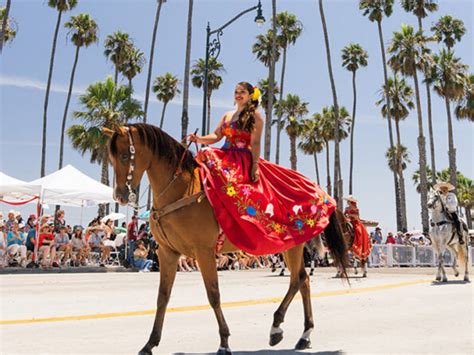The allure of Santa Barbara, with its picturesque coastline, rich cultural heritage, and delectable wine country, makes it a dream destination for travelers worldwide. However, understanding the nuances of its weather can make all the difference between a good trip and a perfect one. Santa Barbara’s climate, characterized by its Mediterranean flair, brings forth mild winters, warm summers, and a unique set of weather patterns that are essential to grasp for any traveler aiming to make the most of their visit. Here are 12 weather secrets for a flawless Santa Barbara escapade:
Understanding the Seasons: Santa Barbara experiences mild seasonal changes. Winters (December to February) are cool and wet, with average temperatures ranging from 45°F to 63°F (7°C to 17°C). Summers (June to August) are warm and dry, with temperatures between 54°F and 77°F (12°C and 25°C). Spring and autumn are mild and pleasant, making them ideal for outdoor activities.
Microclimates: The city has several microclimates due to its varied geography, which includes beaches, mountains, and valleys. For instance, the coastal areas tend to be cooler than the inland regions, especially during summer. Understanding these microclimates can help in planning daily activities, especially for hikers and beachgoers.
Fog: Santa Barbara, like many coastal cities in California, experiences fog, particularly in the mornings during the summer months. This fog, known as “marine layer,” keeps the coastal areas cool and is a significant factor in the region’s unique weather pattern.
Afternoon Winds: The summer afternoons often bring gentle winds that help moderate the temperature. However, these winds can pick up, especially in the late afternoons, affecting outdoor activities like sailing or visiting the beach.
Rainfall: Santa Barbara receives most of its rainfall between December and March. Understanding the rainfall patterns is crucial for planning activities that are weather-sensitive, such as hiking or wine tasting.
Droughts: Despite the rainfall during the winter months, Santa Barbara, like much of California, is prone to droughts. This factor is essential for travelers interested in gardening tours, vineyards, or simply understanding the local ecosystem.
Temperature Extremes: Although rare, Santa Barbara can experience temperature extremes. Heatwaves can occur during the summer, and cold snaps are possible in the winter. Being prepared for these extremes, even if they are unlikely, can ensure a comfortable trip.
Sun Protection: The sun in Santa Barbara can be strong, especially during the summer months. Regardless of the season, using sunscreen, wearing protective clothing, and staying hydrated are essential for outdoor activities.
Beach Weather: For those planning to spend time on the beach, understanding the tidal patterns, ocean temperatures, and the presence of any beach closures due to weather conditions is vital. The best beach weather typically occurs from July to October, with warm sand and pleasant ocean temperatures.
Mountain Weather: For travelers interested in hiking or exploring the Santa Ynez Mountains, understanding the higher elevation weather patterns is crucial. Temperatures drop significantly with altitude, and there can be more rainfall or even snow in the highest peaks during the winter.
Forecast Variability: Santa Barbara’s weather forecasts can be quite variable, especially when it comes to precipitation. Staying updated with the latest forecast can help in planning daily activities more effectively.
Sustainable Tourism: Given Santa Barbara’s vulnerability to climate change, embracing sustainable tourism practices can help minimize the impact of travel on the local environment. This includes choosing eco-friendly accommodations, using public transport, and supporting local businesses that adhere to environmental standards.
In conclusion, Santa Barbara’s weather, though generally mild and pleasant, holds its secrets and nuances. By understanding these weather patterns and adapting travel plans accordingly, visitors can ensure a trip that not only meets but exceeds their expectations. Whether you’re a beach lover, an avid hiker, a wine enthusiast, or simply someone looking to unwind in a beautiful setting, grasping the intricacies of Santa Barbara’s weather is the first step towards creating unforgettable memories in this captivating California destination.
FAQ Section
What is the best time to visit Santa Barbara if I want to avoid rain?
+The best time to visit Santa Barbara to avoid rain is from May to October. These months typically experience little to no rainfall, making them ideal for outdoor activities like beach visits, hiking, and wine tastings.
How does the fog in Santa Barbara affect my travel plans?
+The fog in Santa Barbara can affect your travel plans by cooling down the temperature, especially in the mornings. However, it usually burns off by mid-morning, revealing clear skies. It’s a good idea to plan outdoor activities for the late morning or afternoon when the sun is out.
Are there any specific weather-related hazards I should be aware of in Santa Barbara?
+Yes, Santa Barbara can experience wildfires during periods of drought and heat, and floods during heavy rainfall. It’s essential to stay informed about weather conditions and any related warnings during your visit.



